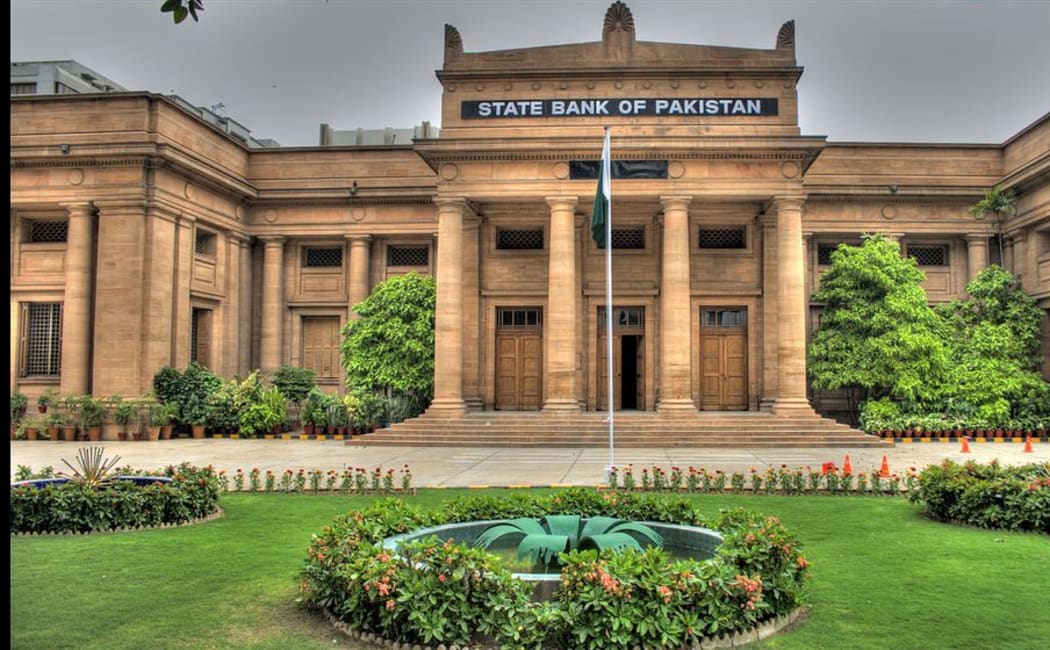SBP Injects Massive Rs1 Trillion into Pakistan’s Market via Reverse Repo and Modarabah-Based OMO

SBP Injects Massive Rs1 Trillion into Pakistan’s Market via Reverse Repo and Modarabah-Based OMO
ISLAMABAD: In a significant move to stabilise the financial system, the State Bank of Pakistan (SBP) injected a staggering Rs1 trillion into the money market on Thursday through a combination of conventional reverse repo operations and Shariah-compliant Modarabah-based Open Market Operations (OMOs). The decision was aimed at addressing short-term liquidity needs and ensuring the smooth functioning of the banking sector.
Breakdown of the Rs1 Trillion Injection
According to SBP’s official data, the majority of the liquidity — Rs898 billion — was provided through the conventional reverse repo OMO. This included:
- 7-Day Reverse Repo: The central bank offered Rs198 billion, which was fully accepted at an interest rate of 11.04%.
- 14-Day Reverse Repo: A larger tranche of Rs700 billion was offered and fully taken up at a slightly lower rate of 11.01%.
In parallel, the SBP also injected Rs106 billion via the Shariah-compliant Modarabah-based OMO, catering to Islamic banking institutions. The details are as follows:
- 7-Day Modarabah OMO: Rs103 billion at an agreed profit rate of 11.13%.
- 14-Day Modarabah OMO: Rs3 billion at the same rate of 11.13%.
Purpose of Open Market Operations
Open Market Operations are one of the SBP’s primary tools for managing market liquidity. By either injecting or withdrawing funds, the central bank influences short-term interest rates and ensures there is neither excessive cash surplus nor shortage in the banking system. OMOs typically involve the purchase or sale of eligible government securities.
This week’s operation was aimed at addressing temporary liquidity shortfalls in the interbank market, which can occur due to seasonal payment obligations, government borrowing schedules, or fluctuations in foreign inflows and outflows.
Why Liquidity Management Matters
Maintaining optimal liquidity is critical for the stability of the financial system. If there is too much liquidity, inflationary pressures can increase, weakening the currency and eroding purchasing power. On the other hand, liquidity shortages can lead to higher borrowing costs, reduced lending, and slow economic activity.
By conducting OMOs — both conventional and Shariah-compliant — SBP ensures that commercial banks have sufficient funds to meet short-term payment obligations, facilitate trade, and continue lending to businesses and consumers.
Role of Shariah-Compliant Operations
The Modarabah-based OMO is designed specifically for Islamic banking institutions that operate under Shariah principles, which prohibit interest-based transactions. Instead of interest, these transactions use profit-sharing arrangements. The inclusion of such instruments demonstrates SBP’s commitment to promoting the growth of Islamic finance in Pakistan, a sector that has been expanding rapidly over the past decade.
Recent Trends in SBP Liquidity Operations
Over the last few months, SBP has conducted several large-scale injections to ensure market stability amid fluctuating macroeconomic conditions. Analysts note that such operations often reflect the central bank’s efforts to balance monetary tightening — aimed at controlling inflation — with the need to keep the banking system adequately funded.
The Rs1 trillion injection is among the largest in recent months and comes at a time when businesses and financial institutions are navigating a challenging economic environment marked by high inflation, exchange rate volatility, and fiscal adjustments under ongoing economic reform measures.
Impact on the Banking Sector
Industry experts suggest that the immediate impact of this injection will be to ease short-term borrowing costs in the interbank market. This may, in turn, support lending activities and help businesses manage operational costs more effectively. However, some economists caution that repeated injections of such magnitude need to be balanced with measures to control inflation and ensure long-term economic stability.
Looking Ahead
SBP’s next steps will depend on the evolving macroeconomic indicators, including inflation rates, foreign exchange reserves, and fiscal policies. Market participants will also be closely watching the upcoming monetary policy announcement for further guidance on interest rates and liquidity measures.
Conclusion
The State Bank of Pakistan’s decision to inject Rs1 trillion into the market through both conventional and Shariah-compliant OMOs underscores the central bank’s proactive approach to maintaining liquidity stability. By catering to both conventional and Islamic banking sectors, SBP is ensuring that all segments of the financial system have the necessary tools to operate smoothly, thereby supporting economic activity and financial stability across the country.
— End of Report —
